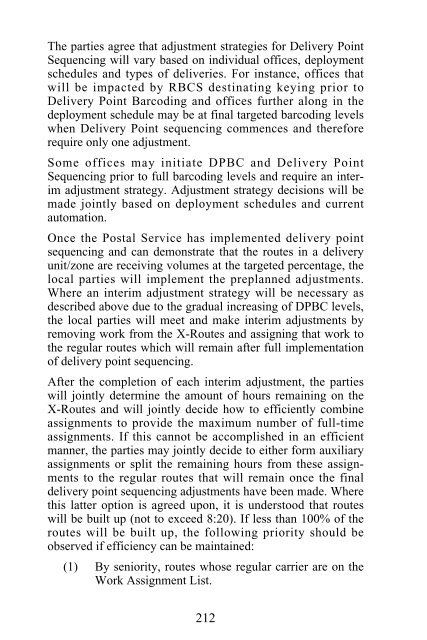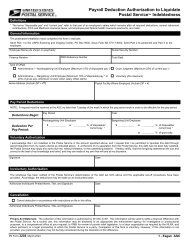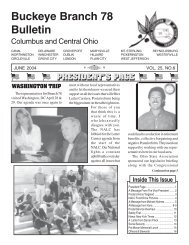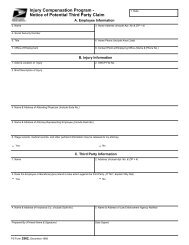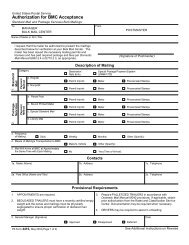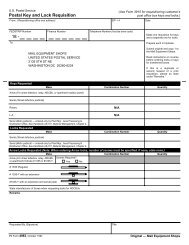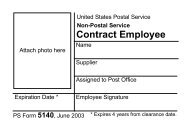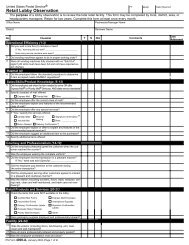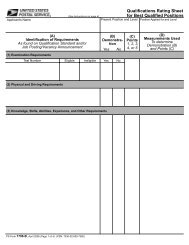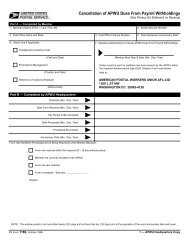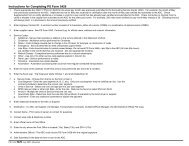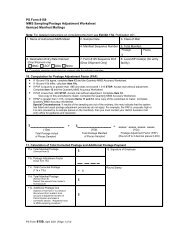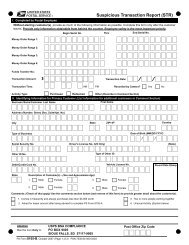National Agreement 2006-2011 - NALC Branch 1100
National Agreement 2006-2011 - NALC Branch 1100
National Agreement 2006-2011 - NALC Branch 1100
You also want an ePaper? Increase the reach of your titles
YUMPU automatically turns print PDFs into web optimized ePapers that Google loves.
The parties agree that adjustment strategies for Delivery Point<br />
Sequencing will vary based on individual offices, deployment<br />
schedules and types of deliveries. For instance, offices that<br />
will be impacted by RBCS destinating keying prior to<br />
Delivery Point Barcoding and offices further along in the<br />
deployment schedule may be at final targeted barcoding levels<br />
when Delivery Point sequencing commences and therefore<br />
require only one adjustment.<br />
Some offices may initiate DPBC and Delivery Point<br />
Sequencing prior to full barcoding levels and require an interim<br />
adjustment strategy. Adjustment strategy decisions will be<br />
made jointly based on deployment schedules and current<br />
automation.<br />
Once the Postal Service has implemented delivery point<br />
sequencing and can demonstrate that the routes in a delivery<br />
unit/zone are receiving volumes at the targeted percentage, the<br />
local parties will implement the preplanned adjustments.<br />
Where an interim adjustment strategy will be necessary as<br />
described above due to the gradual increasing of DPBC levels,<br />
the local parties will meet and make interim adjustments by<br />
removing work from the X-Routes and assigning that work to<br />
the regular routes which will remain after full implementation<br />
of delivery point sequencing.<br />
After the completion of each interim adjustment, the parties<br />
will jointly determine the amount of hours remaining on the<br />
X-Routes and will jointly decide how to efficiently combine<br />
assignments to provide the maximum number of full-time<br />
assignments. If this cannot be accomplished in an efficient<br />
manner, the parties may jointly decide to either form auxiliary<br />
assignments or split the remaining hours from these assignments<br />
to the regular routes that will remain once the final<br />
delivery point sequencing adjustments have been made. Where<br />
this latter option is agreed upon, it is understood that routes<br />
will be built up (not to exceed 8:20). If less than 100% of the<br />
routes will be built up, the following priority should be<br />
observed if efficiency can be maintained:<br />
(1) By seniority, routes whose regular carrier are on the<br />
Work Assignment List.<br />
212


